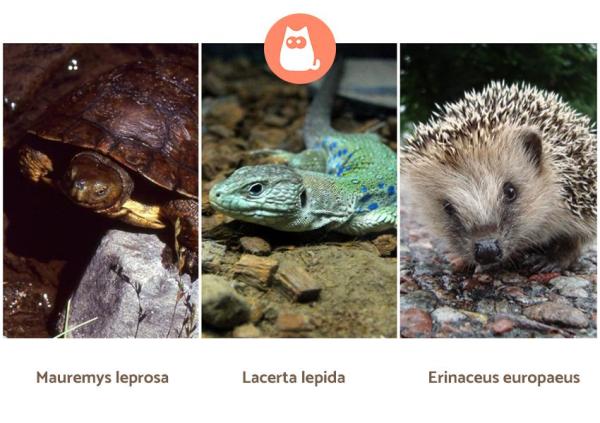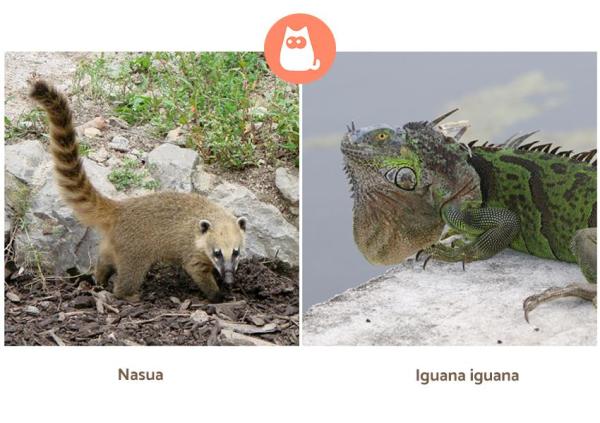
The hypothesis of the book Biophilia, written by Edward O. Wilson, suggests that human beings have an innate tendency which compels us to relate to nature [1]. This concept could be summarized as a "love towards life" or towards living beings. Perhaps this is the reason for the deep desire that people have to own pets, such as dogs and cats. However, there is a growing trend towards the buying or adoption of other species, such as: parrots, guinea pigs, snakes and even exotic animals.
It is important to know that not all animals can be considered as domestic pets. This list might be unknown and/or news to many people. For this reason, here at AnimalWised we wish to discuss which animals shouldn’t be pets. We aim to explain why these animals should be left in nature rather than brought to live with us in our homes.
The CITES agreement
Illegal trafficking of living beings between different countries is a massive problem which needs to be addressed. This trafficking consists of removing animals and plants from their natural habitat in aim of gaining profit. Such extractions from the environment cause a severe imbalance in our ecosystem, economy and in developing countries. Not only is this an issue due to the fact that the animal is unlawfully deprived from its own freedom, but it can also bring severe consequences to its country of origin.
In the 1960s, to combat the trafficking of these animals and plants, CITES (the Convention on International Trade in Endangered Species of Wild Fauna and Flora) was born.[2] This agreement, signed by several governments, aims to protect all endangered or threatened species from illegal trafficking. CITES comprises about 5,800 animal species and approximately 30,000 plant species.
Wild animals as pets
Wild animals, even if they originate from your respective country, should never be treated or kept as pets. In fact, it is illegal to keep wild animals as pets. These animals are not domesticated and trying to domesticate them is somewhat impossible. The domestication of a species takes centuries, it is not a process that can be achieved during the life of a single specimen. If, for example, we did choose to go against the ethology of a species, this would result in the impairment of their proper development, and can be very dangerous to both human and animal. Don't forget that by buying wild animals, you are promoting poaching and depriving them of their freedom.
Here are some examples of species that shouldn’t be kept as pets, but still are:
- Spanish pond turtle (Mauremys leprosa): this emblematic reptile comes from rivers within the Iberian Peninsula. The Spanish pond turtle is currently in danger, as consequence of the proliferation of invasive species and their illegal capture. One of the biggest problems, is that when in captivity, they do not receive their required diet. In addition, terrariums are not suitable for this species. Because of these two main reasons, these turtles commonly experience growth problems, affecting their: carapaces, bones and eyes.
- Ocellated lizard (Lacerta lepida): this reptile, commonly found in Spain, not only suffers from illegal ownership, but also from destruction to its habitat. These animals have also been condemned to false myths, which claim that they hunt: rabbits, birds and coral. This lizard cannot adapt to life in captivity. This is because, naturally, they inhabit large territories and therefore, keeping them in enclosed terrariums is against their nature.
- European hedgehog (Erinaceus europaeus): European hedgehogs are protected. Keeping these animals in captivity is illegal and can result in a hefty fine. Keeping this hedgehog in captivity will result in the death of the animal, as they do not know how to drink from a drinking fountain and are not suited to being caged. If you find an injured European hedgehog we recommend notifying your local environmental agents or veterinarian. These agencies know to help the animal recover before releasing them back into the wild.

Exotic Animals that shouldn’t be kept as pets
The illegal trafficking and possession of exotic animals, in addition to causing irreparable damage to animals, can result in serious public health problems. This is because animals are often top carriers of diseases. Therefore, by moving them from one place to another, comes widespread disease.
Most exotic animals that can be bought have come from illegal trafficking, as these species cannot reproduce in captivity. During the capture and transfer of these animals, more than 90% of them die. When pups are captured, the parents are killed and, without their care, the young cannot survive. In addition, transfer conditions are inhumane, to the extent that some animals are crammed into plastic bottles, hidden in luggage or even stuffed into jacket sleeves. [3]
As if this were not enough, even if the animal does survive the trip, it has still be eliminated from nature: causing imbalance in the ecosystem.
Here are some exotic animals that should not be pets:
- Red-eared slider (Trachemys scripta elegans): this species causes one of the biggest problems when it comes to Iberian Peninsula fauna. Its tenure as a pet grew in popularity years ago, however, as this animal can live for years and grow to such a large size, they are often abandoned. This turtle, due to the fact that it often escapes or is released, is now considered one of the top invasive species.
- Four-toed Hedgehog (Atelerix albiventris): with biological needs very similar to the European hedgehog, in captivity, this species presents the same problems as the native species. But, while the European hedgehog is native to the peninsula, the African hedgehog is not.
- Rose-ringed parakeet (Psittacula krameri) and Monk parakeet (Myiopsitta monachus): Both of these species are affecting some fauna negatively. Both species, through their displacement, are as a consequence, displacing other birds of fauna. They are both aggressive and procreate easily. They were once kept in captivity and accidentally freed, which has led to their spread. These birds are commonly seen in clinics due to: stress and picking, caused by illegal handling and captivity.

Dangerous animals as pets
In addition to being prohibited from possession, there are certain animals that are incredibly dangerous to keep. People are recommended not to have these animals as pets: due to their large size and/or aggressiveness. Among these we include:
- South American coati (Nasua nasua): the South American coati is an exotic species from South America. If kept in a house they can never be left loose, due to their destructive and aggressive nature. Due to increased hunting of coatis by humans, for both consumption or ownership: their displacement can have extremely negative effects on the ecosystem.
- Green Iguana (Iguana iguana): these animals often bought when they are small, can reach up to 1.8 meters in length. They have an aggressive nature and attack when they feel threatened or do not want to be bothered. People have tried to keep them in homes before, but in the end they are most often sent to specialized centers, where they unfairly live out the rest of their lives in captivity.

If you want to read similar articles to Animals That Shouldn’t Be Pets, we recommend you visit our What you need to know category.
- Wildf
1 Wilson, Edward O. (1984). Biophilia. Cambridge: Harvard University Press.
2 Testing the Effectiveness of an International Conservation Agreement: Marketplace Forensics and CITES Caviar Trade Regulation. 2012.
3 Lavorgna, Anita. (2014). Wildlife trafficking in the Internet Age. CrimeScience Journal.